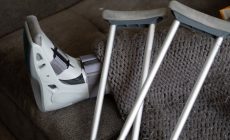
If you live in an area which is prone to extreme weather conditions, the shed in your backyard can become the shelter for you and your family. Not only can it store water, food, blankets, and other survival essentials, but also your valuables and items you want to be protected from looting that unfortunately often accompanies large-scale natural disasters. Besides, a fortified shelter can be an excellent stronghold in any civil unrest and WROL (Without Rule of Law) scenario, when the police force is stretched thin and homeowners must protect their lives and property. Here’s a short guide.
Structural modifications
Extreme weather events include powerful storms with wind speeds as high as seventy miles per hour, often followed by power outages and extensive flooding. Most storage outbuildings aren’t anchored to the ground, with most of them resting on a base made of wooden beams or on gravel foundation. The latter makes much sense if you live in an area prone to earthquakes, as it allows the structure to slide on the ground without breaking apart. However, if storms are your main concern, you need to anchor it to the ground to prevent the hurricane from picking it up. One way is to drive stakes deeply into the ground and attach heavy ropes or cables to both the stakes and the building, something similar to securing a tent with pegs.
- The roof is the part of the shed that is most exposed, so make sure it’s sound from inside and outside, perhaps even contact a roof specialist to examine it. If you shed has small windows, cover them with plywood at least half of an inch thick. You can secure a piece of thick plywood over the door as well to prevent it from being blown open.
- If you expect to be living in a shed for a certain period, you should make it more habitable. Hire an electrician to wire it for electricity, with an ability to plug in a generator or roof solar panels when the grid goes down. If the size and shape of the shed allow it, you can add plumbing as well, especially if you can connect it to the rainwater collector on your roof.
Storage and supplies
Remove the gardening tools, fertilizer, lawnmowers, and other items you’d typically keep in the shed to make room for survival gear, wood, and water. Extreme weather aside, you can use a fully stocked shed which can help you keep yourself safe in emergency scenarios, such as disruption of social and political order, environmental disasters like chemical spills, the collapse of society’s resources, economic collapse, pandemic, etc.
- As far as the food is concerned, you should stock at least one year’s supply. Use see-through bins for easier identification and label each one with expiration dates so you can rotate on longevity. Apart from MREs (Meals Ready to Eat), you should stock the basics like rice, beans, cornmeal, lard, salt, white and brown sugar, and canned meat, fruit, and vegetables.
- Keep at least one gallon of water per person per day. National organizations like FEMA (Federal Emergency Management Agency) recommend at least a three-day supply of water in the case of emergency, however, most survivalists recommended a two-week supply as a bare minimum. Store water in sanitized plastic jugs in a cool dark place, and rotate every six months.
Fortifications
Natural disasters are, sadly, often followed by civil unrest, with groups of looters taking advantage of overwhelmed law enforcement to break into stores and private properties. Your fully stocked shed should also include measures to withstand the attempt of breakage and discourage intruders. The mentioned sheets of plywood are best installed on the inside of the windows so you can remove them as needed, while the glass acts as an alarm that someone is trying to break in. Also, once you’re all inside, install a doorstop, a simple 2×4 screwed on its flat side on the floor. In a civil unrest scenario, it’s reasonable to expect that more people will be armed, either to defend their supplies or to take other people’s. Consider sandbagging your shed from the outside. Not only will this protect the people inside from stray rounds, but it will also make it look a much tougher nut to crack from the outside.
Designed for comfort and aesthetics, our homes aren’t made to withstand adverse weather conditions, and can be severely damaged, making them inhabitable until repaired. A simple garden shed, on the other hand, can be made an emergency shelter with a few simple modifications.
























Leave a Reply
Your email address will not be published. Required fields are marked (required)